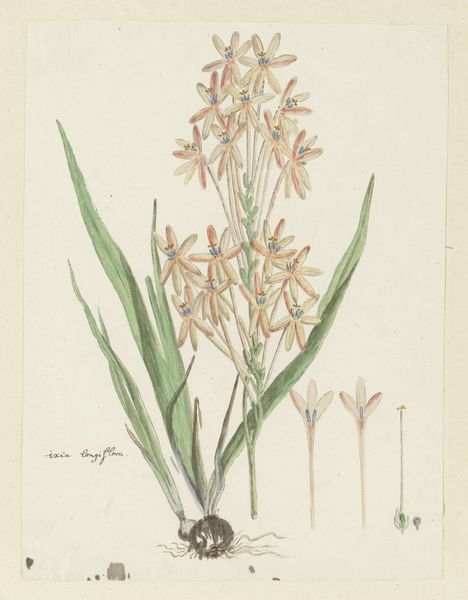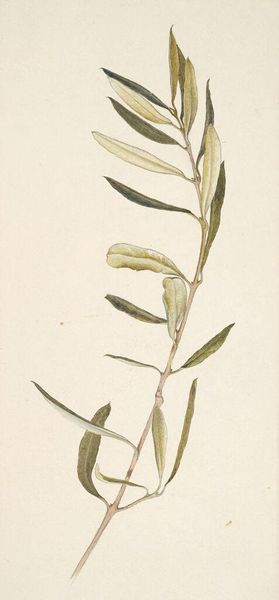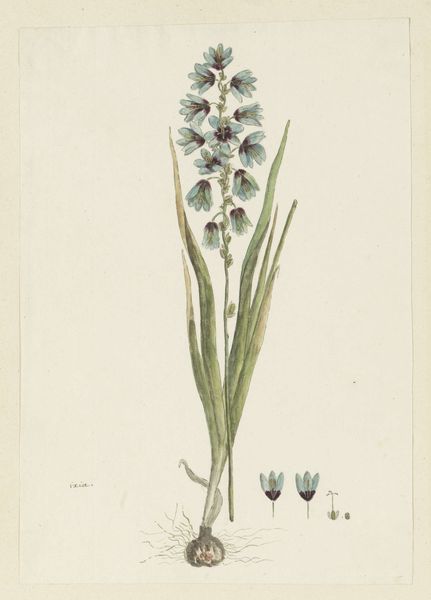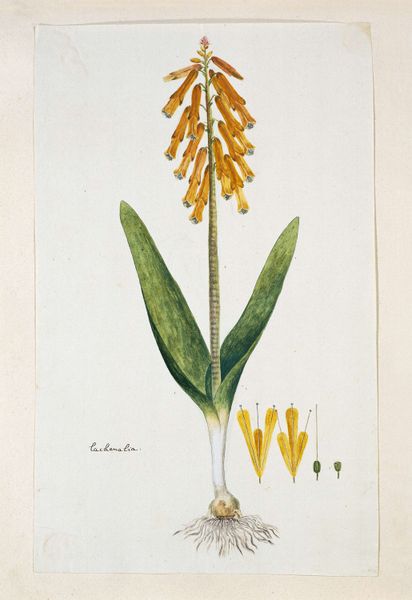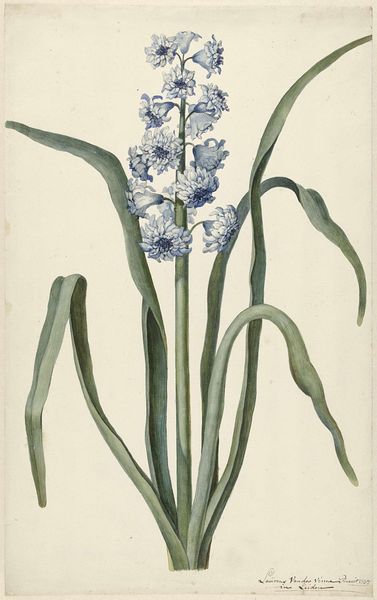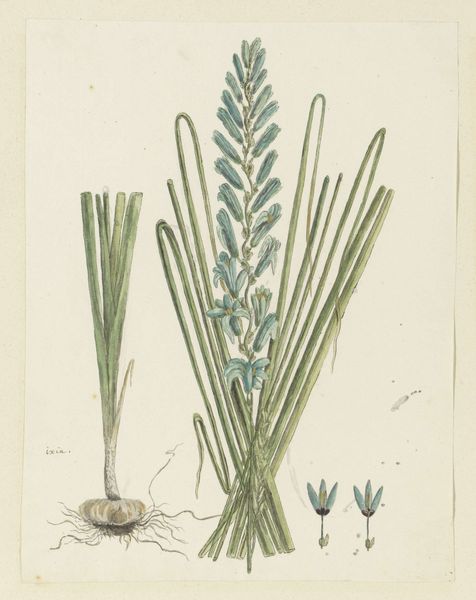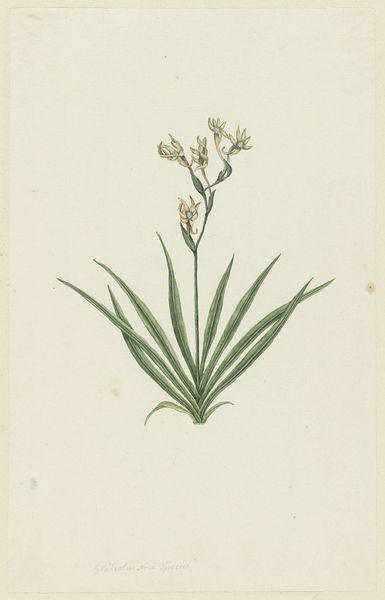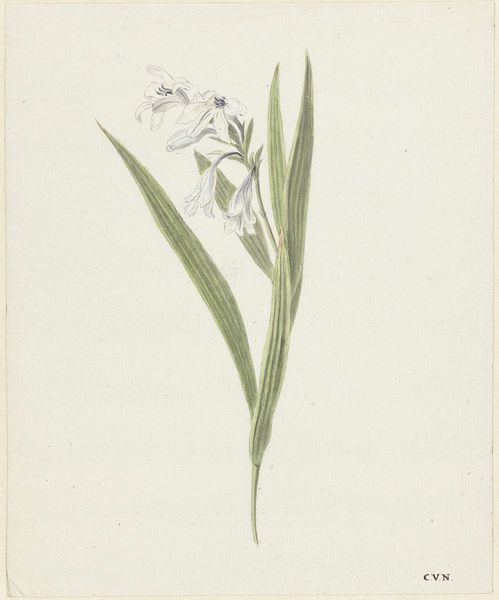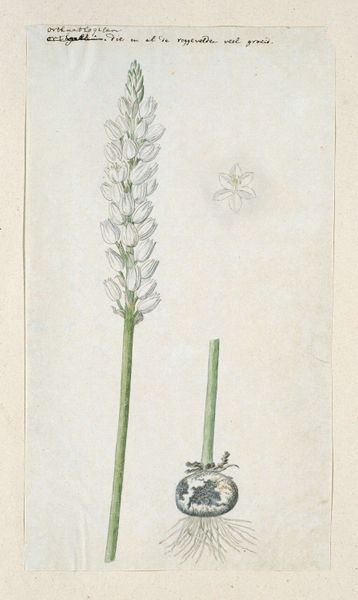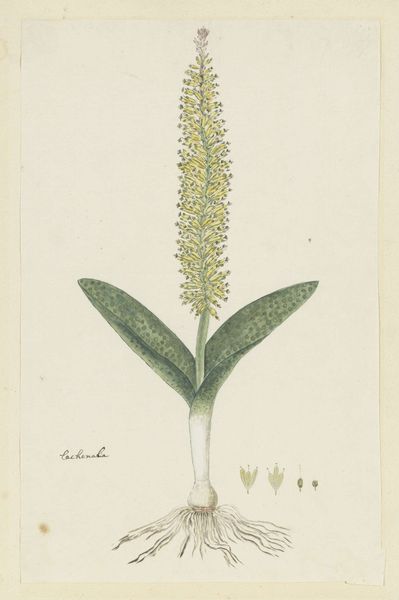
drawing, plein-air, watercolor
#
drawing
#
plein-air
#
watercolor
#
15_18th-century
#
watercolour illustration
#
botanical art
#
realism
Dimensions: height 660 mm, width 480 mm, height 304 mm, width 255 mm, height mm, width mm
Copyright: Rijks Museum: Open Domain
Editor: This watercolor drawing, "Lachenalia aloides (L.f.) Engl. (Opal flower)," was created sometime between 1777 and 1786 by Robert Jacob Gordon. It's a beautiful, simple botanical illustration, almost clinical in its precision, yet very graceful. What do you see in this piece, and how might its visual simplicity carry cultural meaning? Curator: Its simplicity is deceptive, isn't it? On the surface, it's a realistic depiction. But consider the time it was made. Botanical illustrations like this weren't just scientific records; they were also about capturing the exotic, bringing the wonders of the Cape back to Europe through visual representation. Think of what this specific bloom *meant* to those who saw it for the first time in drawn form! Editor: So the flower itself becomes a symbol? Curator: Exactly. Think of flowers in art history, their symbolic weight – lilies for purity, roses for love. This Opal flower, documented so meticulously, might represent the allure of exploration, the exoticism of South Africa. The scientific exactness lends a sense of authority, visually “possessing” the flower for European eyes. Editor: I see, it's not just about the flower; it’s about claiming knowledge, too. Is there something particular about watercolor as a medium, or 'plein-air', to add to this point? Curator: Watercolor, easily transportable, aligns with the on-site immediacy and ‘realism’ of plein-air, reinforcing the claim to accurate observation. And in this artwork’s particular visual, don't those two, tall opposed leaves *frame* the flowers centrally in an imposing display? Gordon probably intended those leaves to visually "display" this exotic object to viewers for ages to come. Editor: That's a perspective I hadn't considered, but it reframes how I view botanical art of this period entirely! Curator: Indeed. What was originally intended to be an illustration in "realism" can instead carry great emotional, psychological, and even colonialist symbolic meanings, still valuable centuries later!
Comments
No comments
Be the first to comment and join the conversation on the ultimate creative platform.
